Together with experts, we deal with which reason it will be better for fences from the grid, a professional sheet on metal and brick columns, and also tell about the features of the pile foundation for the fence.
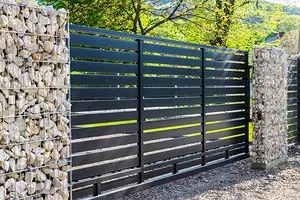
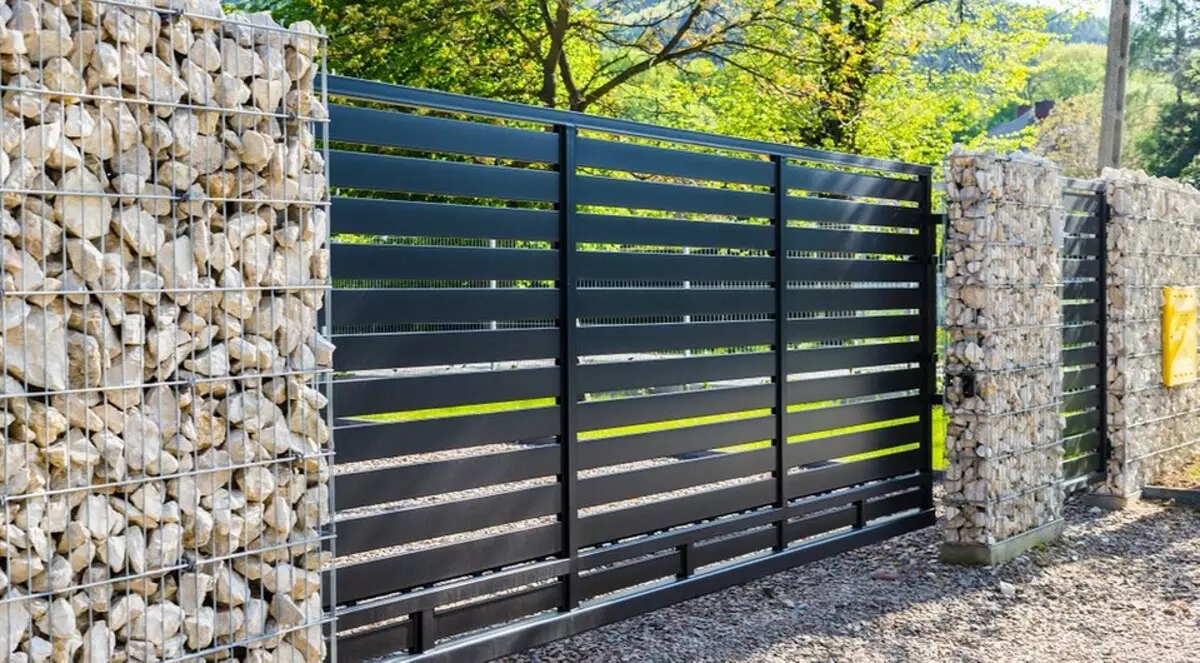
Improvement of the site will not be completed without a fence. You can choose from a large number of options for fences: from the primitive grid-slaza to a wrought lattice and walls made of natural stone. However, all options have one common feature: a reliable support is necessary, which will protect the design from erosion and washing the soil, as well as seasonal deformities of the soil. Experts School of Repair "Lerua Merlen" talk about the options for the foundation under the fence with metal and brick columns.
How to make a reliable base for the fence of the site
Why do you need pillars, materials for themTypes of foundations
1. For a fence from the grid
2. For a fence from the professionalist
3. Pile base
Selection of materials for pillars
Most of the fences that make from the profile sheet, wooden stacate plates, various types of grid, as well as lattices made of steel rods, have a similar design. The main material - boards, sheets or rods - attached to longitudinal lags, forming a section. Fragments obtained in this way must be installed vertically and securely fix it. For this section are attached to the columns. Most often for facilities from sheet materials, mesh and lattices, metal and brick supports are used.
The choice between steel and brick does not have clear criteria, with the exception of the carrying capacity of the structure. Today, the "hybrid" solution is used in the country construction, in which the steel pillar serves as a rod for support made of decorative facing bricks.
For fences from heavy materials, as well as for high structures from lightweight materials that carry out a significant wind load, a reliable support is required. In this case, the brick pillar on a powerful and reliable foundation with a solid steel pipe inside will be the most efficient solution.
When choosing a foundation for pillars, the bearing capacity also plays an important role. We will tell about three budget ways to create a reliable basis.
3 types of foundation for fence
Each of the three projects has its own characteristics and one common line - any of these foundations under the fence can be collected with your own hands.1. For fencing from the grid on metal columns
The grid is one of the easiest materials used for the construction of a fence, which is practically not experiencing a wind load. With a short weight, the fence from the grid does not require durable supports and a powerful foundation.
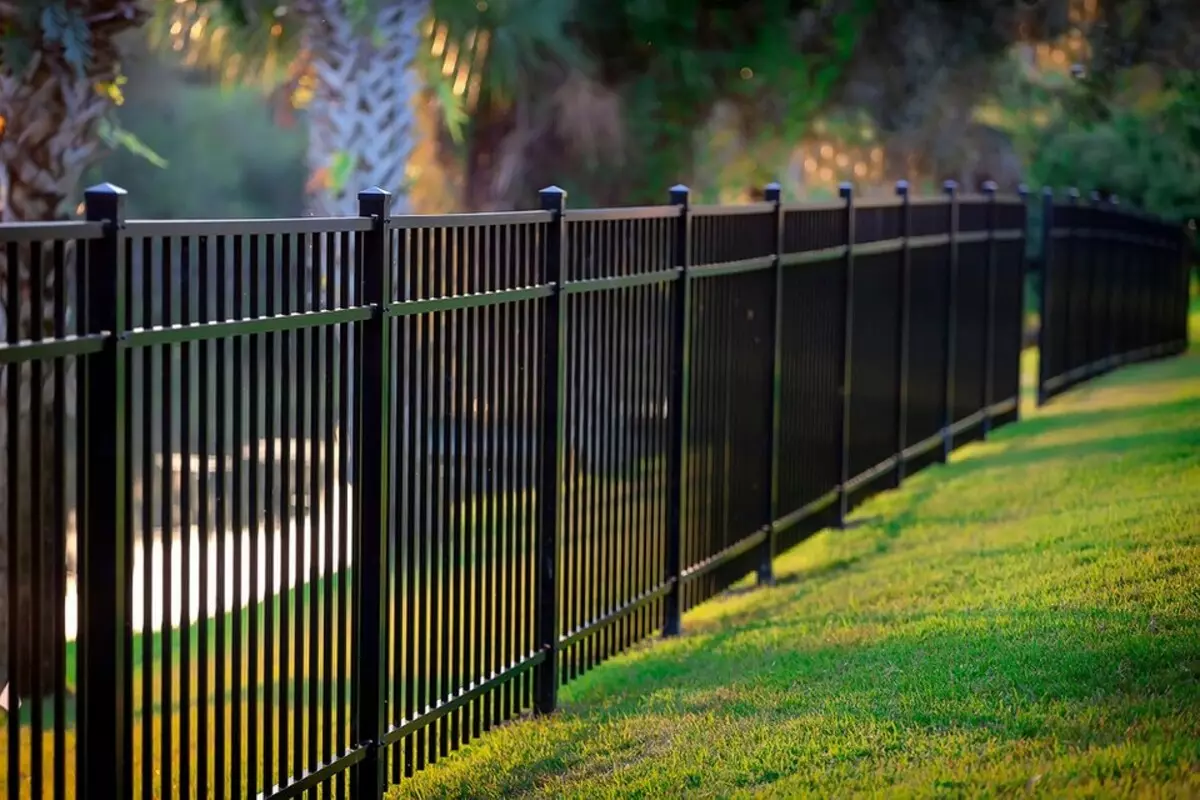
For arrangement, the fences are used support from a steel pipe with a diameter of 42 millimeters with a height of 1.5 to 2.5 meters. They are installed on a depth of 1 meter. According to one of the received methods, the hole is drilled before installing the pillar in the ground, twice the diameter of the pipe.
After installing pipes, approximately half of the holes fall asleep with rubble to create drainage. Then on top of the rammed rubble to the surface of the soil poured a layer of concrete. The cushion from rubble takes on the energy of seasonal deformations of the soil as a result of the frosty powder process and does not allow the pillars to deviate from the vertical axis.
On complex types of soil, for example, wet clay, the technology can be supplemented with a hole in the opening of the waterproofing "glass" with an uninsulated bottom. The cylinder from the rubberoid is placed in the well, and then install the support, observing the procedure procedures described above.
2. For fence from the professional sheet on steel or brick columns
The profiled sheet is a popular material for fence height from 1.8 to 2.5 meters. If desired, the structure height can be increased by placing standard sheets in two rows vertically. The profiled sheet manufacturers provide a rich selection of colors - white, green, brown, blue, red and others. There is an opportunity to purchase a polyester professional professional and various decorative effects, for example, with imitation of masonry from natural stone or natural wood structure.
The fence from the professional leaf can be installed on steel or brick supports, as well as on a brick poles with a steel rod.
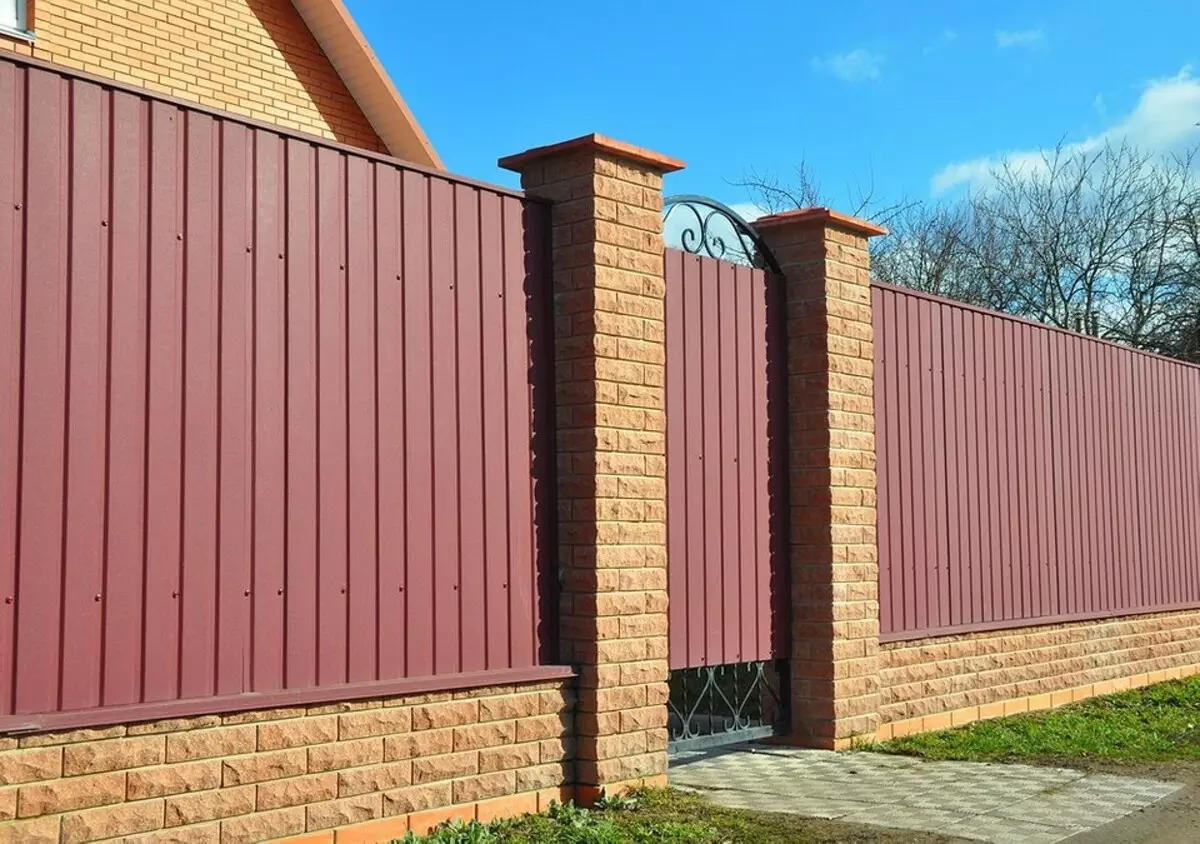
The diameter of the structures is chosen depending on the height and thickness of the sheet. Steel are presented in two versions - from a square and round tube. For a fencing of 1.8-2 meters high with a square tube with a cross section of 80x80 mm or a round tube with a diameter of 51 mm and a minimum wall thickness of 3 mm. For the installation of the fence on its own, it is more convenient to use the finished pillars of 2.5 meters high, equipped with plugs at the upper end and special fasteners for the professional leaf. Mounts allow you to mount sheets without longitudinal lag.
The ribbon of reinforced concrete serves as a reliable basis for a high fence from the proflist. Concrete reinforced steel or composite reinforcement along the entire length of the foundation. The depth of the ribbon foundation for the fence in this case ranges from 30 to 70 cm, depending on the type of soil and the level of groundwater. Determine these parameters helps expertise with the involvement of specialists.
Before the construction of the foundation on the plot, mark the markup to determine the number of supports. The distance between them is usually equal to the length of the proflist and is 2 meters. Then all over the perimeter is digging a trench from 25 to 40 cm. In the intended points of the column settings, the manual brings make the holes with a depth of 50 cm. In the holes, the liner from the rubberoid is installed.
After installing the columns, they are driven into a small depth. To fix the support in place before the fill, it is usually 20 cm enough. After that, fittings are placed in the trench. At the bottom of the trench, create a pillow of sand. After coating, the sand is shed water and tamped until a layer is obtained at least 10 cm thick. At the next stage, formwork is built into the trench. In the final stage in the formwork, a pre-cooked solution of concrete for the foundation of the fence is poured, into which the crushed stone of the shallow fraction is mixed. At this stage, the final control of the accuracy of the installation of the column is carried out using a construction level.
After completion of the work, it is necessary to make a technological pause for a week so that the concrete gained strength. After that, you can remove the formwork.
3. Foundation from screw piles for all types of fences
Fences on screw piles are a relatively new technology for individual construction. The pile foundation has several advantages in front of the tape: more affordable cost, minimal number of earthworks, simplicity and efficiency of installation. A certain disadvantage can be considered that supports are not related to each other. Because of this feature, the clearance between the fence and the ground is not closed, as in the case of a tape base. However, this feature is compensated for no less durable fixation of piles in the ground below the drainage depth, which effectively protects the fence from the effects of frosty powder. Due to this, such a design justs longer than the fencing on the concreted pillars. Vintage piles are made from durable steel pipes of fixed-length with a sharp tip and blades, with which the pile is screwed into the ground, like a tree self-sufficiency.
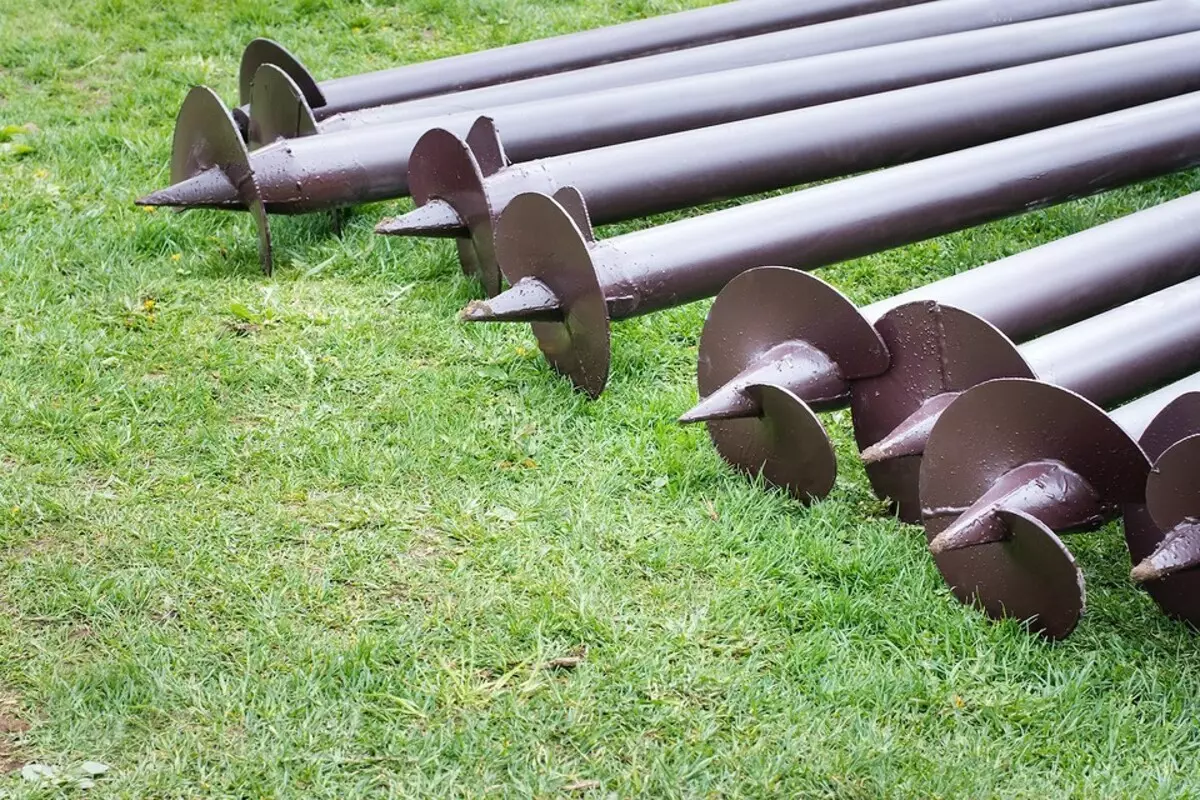
For light fences from the chain and professional sheet up to 2 meters high up to 2 meters apply 57-millimeter piles. For heavy and high designs on steel and brick colums, more powerful piles with a diameter of 76 mm are used.
Screw piles are mechanically installed using special drives. This work can be done by hand by two people with the use of levers or scrap. The verticality of the installation is controlled by a bubble level with a magnetic sole.
Poles from the steel pipe are permissible to be attached to pile shanks with the help of electric welding. For mounting a support from a brick, it is necessary to trim the shanks below the soil level and strengthen over the gloves - special sites that serve to mount to the welds arranged on top of the structures. If necessary, perform a brickwork, which closes the lumen between the shears of the fence and the soil, the pile shanks are connected to the steel channel located at the ground level, which serves as a foundation for masonry.


